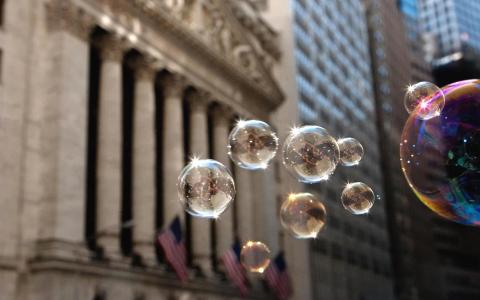
(Plan Advisor) Over the past week or two, a number of major asset managers and advisory firms have updated their 2021 market forecasts, with almost all of them increasing their return expectations by a fairly sizable margin.
Their increased optimism is based on a handful of factors, including the likely prospect of Congress passing another sizable federal stimulus package and the fact that the vaccination effort against the COVID-19 pandemic seems to be picking up real steam. Citing such factors, Jeff Buchbinder, equity strategist for LPL Financial, says his firm has upgraded its 2021 forecast for U.S. gross domestic product (GDP) growth from between 4% and 4.5% to between 5% and 5.5%.
Buchbinder believes a stronger earnings outlook supports higher stock prices, and so LPL has also boosted its year-end 2021 fair value target range for the S&P 500 from between 3,850 and 3,900 to between 4,050 and 4,100. The new target range is based on a price-to-earnings (P/E) ratio of just below 21 times the firm’s 2022 earnings-per-share forecast of $195. PGIM Investments shared similar data last week, suggesting that an “earnings revival” driven mainly by improving revenue growth and increased operating leverage is likely to support solid equity returns this year, even as elevated stock market price/earnings multiples may experience muted declines.
Amid the positive commentary, it must be said, came an important note of warning from Ron Surz, a regular reader and the president of Target Date Solutions and chief investment officer (CIO) of GlidePath Wealth Management. In a phrase, Surz says he is seeing signs of irrational exuberance in the equity markets, and he is not shy about using the term “bubble” to describe where stock prices sit today. He says investors who are near retirement or in retirement should be thinking very seriously about sequence of returns risk, and the possibility of worse-than-expected performance in 2021.
“The narratives that accompany these forecasts are optimistic in seeing only the positives, namely that vaccines will cure the pandemic, that earnings will soar in an economic recovery, and that the Federal Reserve will support stock and bond markets,” Surz says. “There is little or no mention of the threats we face.”
Based on his own analysis of current and anticipated price-to-earnings ratios and earnings growth figures, Surz says he believes stock prices are unreasonably high. He acknowledges the common argument that low interest rates support the current level of stock prices, but he doesn’t necessarily buy that narrative.
“I believe we could experience a 50% loss if P/Es return to their historic average of 15,” Surz suggests. “In other words, it’s what could happen if the current bubble bursts. But a pandemic didn’t burst the bubble, so what could? There are reasons the bubble exists, and dangers that could spoil the fun.”
Surz recalls how, when COVID-19 was recognized as a pandemic in February 2020, the stock market plummeted 35%.
“Many said COVID-19 was the match that lit the overvalued tinder, but the flame was extinguished quickly, and the bubble inflated more even though the economy suffered,” Surz says. “The stock market disconnected from the economy.”
Surz’s warning is camped in the belief that this disconnect is probably temporary.
“Again, COVID is only one of many threats to the economy and stock market,” he warns, ticking through a list of potentially disruptive factors that have nothing to do with the pandemic, such as the possibility of runaway inflation, negative interest rates, an inverted yield curve, worsening trade wars, devalued currencies, mass bond defaults and more.
“No one knows how or when these threats will materialize, but it’s unlikely that none will occur in this decade, which is a critical decade for Baby Boomers,” Surz says. “There has never before been 78 million Americans worth $50 trillion all simultaneously in the ‘risk zone’ spanning the 10 years before and after retirement during which lifestyles could be devastated by investment losses. When the stock market fell in the first quarter of 2020, a throng of articles advised investors to ‘stay the course,’ and that advice worked out this time, despite the fact that it was not good advice for Baby Boomers.”
At this stage in their lives, Surz argues, the primary investment objective of Baby Boomers should be to protect their lifetime savings, yet the average Boomer is still invested 60/40 in stocks and bonds.
“It is too risky,” Surz says. “It’s a mix that lost more than 35% in 2008. In other words, Baby Boomers are on the wrong course. The conundrum in moving to safety is two-fold, as safe assets pay no interest, and, even worse, current money printing could radically reduce the purchasing power of money by bringing serious inflation.”
Consequently, Surz says, Baby Boomers should consider protecting themselves with inflation hedges.
“Staying the course could work out for younger investors with long time horizons because recoveries are likely, but some recoveries, like the Great Depression, take a decade to materialize,” Surz says.



